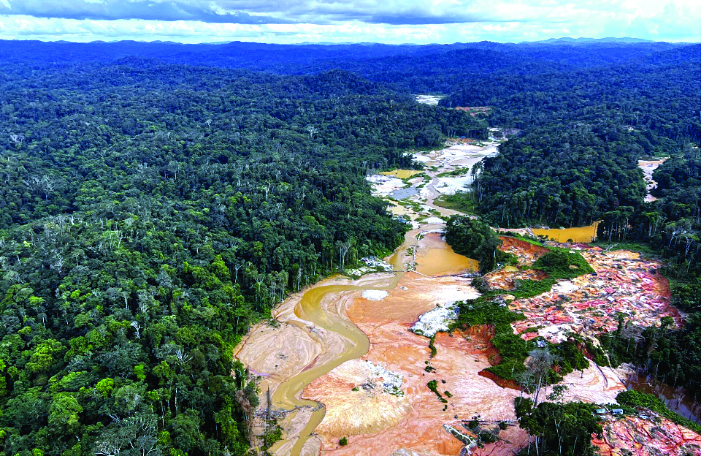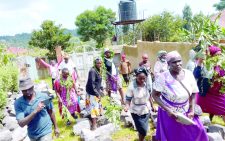World loses rain forest cover to mining

The world lost nearly 1.4 million hectares of trees from 2001-2020 due to mining and related activities, with tropical primary rainforests and protected areas being particularly affected a new report has revealed.
The report by World Resources Institute (WRI) shows that most of this tree cover loss is concentrated in just a few countries, where coal and gold mines are chipping away at some of earth’s last remaining undisturbed rainforests.
“Mining-related forest loss between 2001 and 2020 is quite concentrated, with 87 per cent of tree cover loss occurring in just 11 countries: Indonesia, Brazil, Russia, United States, Canada, Peru, Ghana, Suriname, Myanmar, Australia and Guyana,” reveals the report.
Indonesia according to the report has the highest tree cover loss linked to mining (370,000 hectares) followed by Brazil (170,000 hectares), mostly due to coal mining and small-scale gold mining respectively. Both countries are home to extensive swaths of tropical primary rainforests.
According to the report, of the 1.4 million hectares of mining-related tree cover loss 450,000 hectares were in tropical primary rainforests, 150,000 hectares were in protected areas, and 260,000 hectares were in indigenous people and local community lands.
“Mining-related loss in tropical primary rainforests is especially concerning because these are some of the most carbon-rich and biodiverse areas of the world. They also help regulate local and regional climate effects like rainfall and temperatures,” reads part of the report.
Felling these trees, according to the report, also released 36 million tonnes of carbon dioxide equivalent (CO2e) per year into the atmosphere. In addition to deforestation and carbon emissions, mining poses a significant threat to biodiversity and exacerbates climate change. The destruction of habitats and ecosystems further accelerates environmental degradation, amplifying the global climate crisis.
Demand for coal
According to the report, since the turn of the century, mining has increased by 52 per cent due to surging demand for coal, iron, industrial minerals and other metals. In some cases, this extraction has come at the expense of forests, along with burdens to the communities who rely on them.
Gold and coal have historically been the biggest drivers of tree cover loss related to mining. According to a WWF study, gold and coal extraction resulted in over 71 per cent of all mining-related deforestation from 2001 to 2019. However the WRI report shows that critical minerals for things like smartphones and renewable energy are also becoming a growing driver of mining. This demand is expected to increase in coming years.
“Despite the significant risks posed by mining, demand continues to grow, particularly as countries seek more minerals for clean energy and advanced technologies. However, it is crucial to meet this rising demand while simultaneously safeguarding people, nature, and the climate,” reads the report.
Tropical forests
Although mining’s role in global tree cover loss is small compared to the main drivers (for example, 130 million hectares were lost due to forestry and 90 million hectares from wildfire between 2001 and 2020), it can have outsized impacts regionally.
This includes in tropical primary rainforests, some of the world’s most important ecosystems where mining is a growing driver of loss, and in Indigenous and local community territories, where people depend on forests for their livelihoods.
Mining often involves extensive removal of vegetation and soil, making it difficult if not impossible to achieve full ecological recovery of cleared lands. It can also result in air and water pollution that affect human health and surrounding ecosystems.
“Mining disproportionately affects forest-dependent indigenous and local communities. Indigenous peoples and local communities who live in and near forests often rely on them for food, water, fuel wood, medicine and cultural benefits. The destruction of these forests through mining operations not only threatens their livelihoods and access to essential resources but also disrupts their cultural practices and spiritual connections to the land.”
Additionally, the pollution and environmental degradation caused by mining can lead to long-term health issues and the loss of biodiversity, further exacerbating the challenges faced by these communities. Without proper safeguards, mining can displace entire communities, eroding their traditional ways of life and leaving them vulnerable to poverty and social instability.
Indigenous communities
According to the report, while mining can bring economic benefits to indigenous and local communities, it also often happens without their consent. Most local communities lack secure rights to the resources beneath their lands. They’re often excluded from decisions to grant licenses and are not adequately compensated for loss of the forests, water and other natural resources on which they depend.
However, despite the challenges, it’s not all bleak. While demand for mined materials is still booming, the landscape is beginning to shift. The increased adoption of renewable energy and electric vehicles will necessitate the phasing out of coal, while simultaneously driving up the demand for critical minerals, projected to quadruple by 2040.
This shift presents an opportunity to embrace more sustainable mining practices that prioritize environmental stewardship and the well-being of affected communities.
“This transition opens an opportunity to move away from past practices and minimize environmental damage from mining, including by following the “forest-smart mining” framework developed by the World Bank. This framework allows for a consultative process for reducing the impact of mining on forests,” reads part of the report.
It goes on; “demand for minerals will inevitably continue to increase in the coming years, but deforestation doesn’t have to follow it.”











